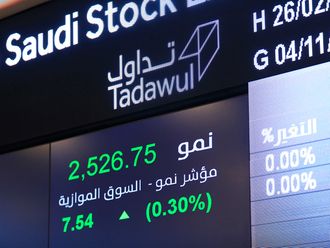LONDON: Oil prices rose on Thursday after US data showed a surprise decline in inventories, suggesting that a global glut may be ending after moves by the Organisation of the Petroleum Exporting Countries (Opec) to cut production.
Benchmark Brent crude oil was up 70 cents a barrel at $56.54 (Dh207) by 0855 GMT, recovering from a drop of 82 cents on Wednesday. US light crude was 70 cents higher at $54.29 a barrel.
Both benchmarks are near the top of relatively narrow $4 ranges that have contained trade so far this year, reflecting a period of low volatility since and other exporters agreed to cut output.
Opec and producers including Russia aim to reduce production by around 1.8 million barrels per day (bpd) in an attempt to drain an oversupply that has kept prices depressed for more than two years.
So far Opec appears to be sticking to its deal but other producers, notably US shale companies, have increased output, helping swell stocks in the United States, the world’s biggest oil consumer.
Industry data on Wednesday showed US crude inventories fell by 884,000 barrels in the week to Feb. 17 to 512.7 million, compared with analyst expectations for an increase of 3.5 million barrels.
US gasoline and distillate fuel stocks also fell, the American Petroleum Institute (API) said.
Tamas Varga, analyst at London brokerage PVM Oil Associates, said oil prices could rally further if the US government’s Energy Information Administration (EIA) also reports a fall in inventories when its data is published at 11am EST (1600 GMT) on Thursday.
“If the US stock draws are confirmed by the EIA, we could see the market go much higher,” Varga said.
But Tony Nunan, oil risk manager at Mitsubishi Corp in Tokyo, said the market needed to see that stocks outside the United States were also falling for prices to break out of their trading ranges.
“It’s a battle between how quick Opec can cut without shale catching up,” Nunan said, referring to US drilling in shale formations that has shown an upsurge this year. “What Opec really has to do is get the inventories down.”
Eleven non-OPEC oil producers that joined the Opec deal have delivered at least 60 per cent of promised curbs so far, Opec sources said on Wednesday, higher than initially estimated.
— Reuters











